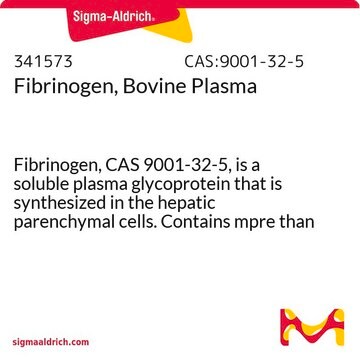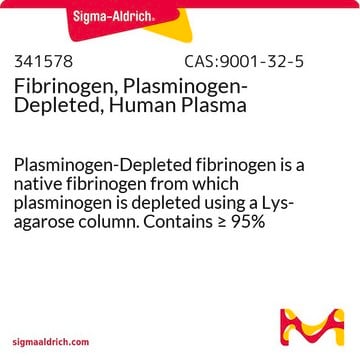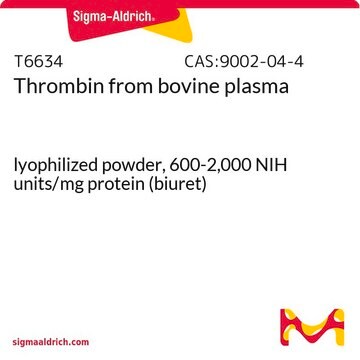F6755
Fibrinogen from rat plasma
60-80% protein (≥60% of protein is clottable)
Synonym(s):
Factor I
About This Item
Recommended Products
biological source
rat plasma
Quality Level
form
powder
quality
60-80% protein (≥60% of protein is clottable)
mol wt
α-chain 63.5 kDa
β-chain 56 kDa
γ chain 47 kDa (about 4% carbohydrate content)
soluble dimer 340 kDa
concentration
60-80% (biuret)
technique(s)
cell culture | mammalian: suitable
immunoblotting: suitable
storage temp.
−20°C
Gene Information
rat ... Fga(361969) , Fgb(24366) , Fgg(24367)
Application
- in the preparation of growth factor solutions
- to apply on discontinuous SDS-polyacrylamide gels for the detection of IgG (immunoglobulins) type antibodies by immunoblot analysis
- to mix with cell suspension to form a clot and retain the cells for avoiding its dispersion during transplantation
Biochem/physiol Actions
Quality
Analysis Note
Storage Class
11 - Combustible Solids
wgk_germany
WGK 3
flash_point_f
Not applicable
flash_point_c
Not applicable
ppe
Eyeshields, Gloves, type N95 (US)
Certificates of Analysis (COA)
Search for Certificates of Analysis (COA) by entering the products Lot/Batch Number. Lot and Batch Numbers can be found on a product’s label following the words ‘Lot’ or ‘Batch’.
Already Own This Product?
Find documentation for the products that you have recently purchased in the Document Library.
Customers Also Viewed
Our team of scientists has experience in all areas of research including Life Science, Material Science, Chemical Synthesis, Chromatography, Analytical and many others.
Contact Technical Service











